Salsa Quemada is a smoky fire-roasted Mexican salsa featuring tomatoes, tomatillos, garlic, and chiles. It's a delicious table salsa, perfect for dipping tortilla chips, but also fabulous as an accompaniment for many Mexican dishes like tacos and quesadillas.
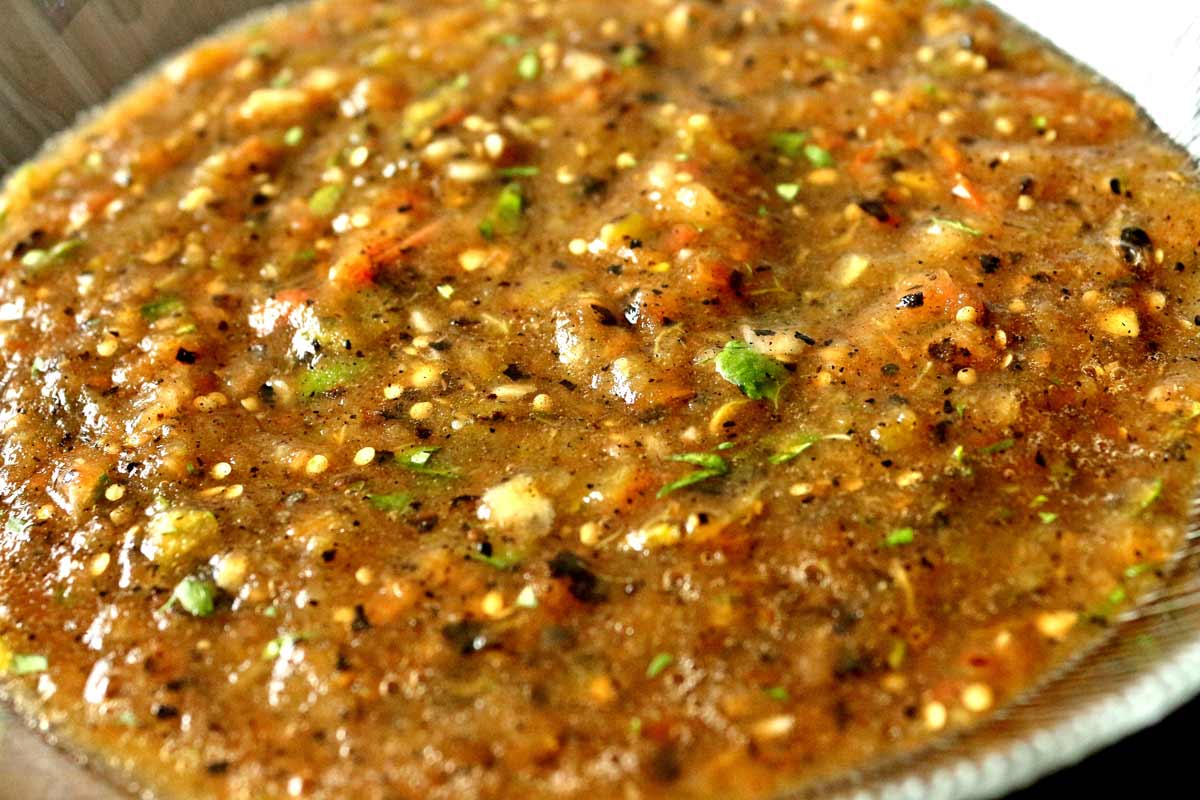
In Mexican cuisine there are many varieties of salsa, each with its own unique attributes and regional distinctions. Salsa Quemada, a simple roasted tomato and tomatillo salsa, is an excellent versatile salsa to add to your next Mexican menu.
The word quemada literally means "burnt." Unsurprisingly, the ingredients are dry roasted to a char in a cast-iron pan lined with foil. This authentic smoky salsa is very easy to make but requires a little extra time to watch and occasionally rotate the ingredients for an even char.
The result is a bit smoky, a little tart, and just as spicy as you want it to be. It is above and beyond your typical restaurant-style salsa found in American taquerias, but approachable enough for novice palates.
Ingredient notes
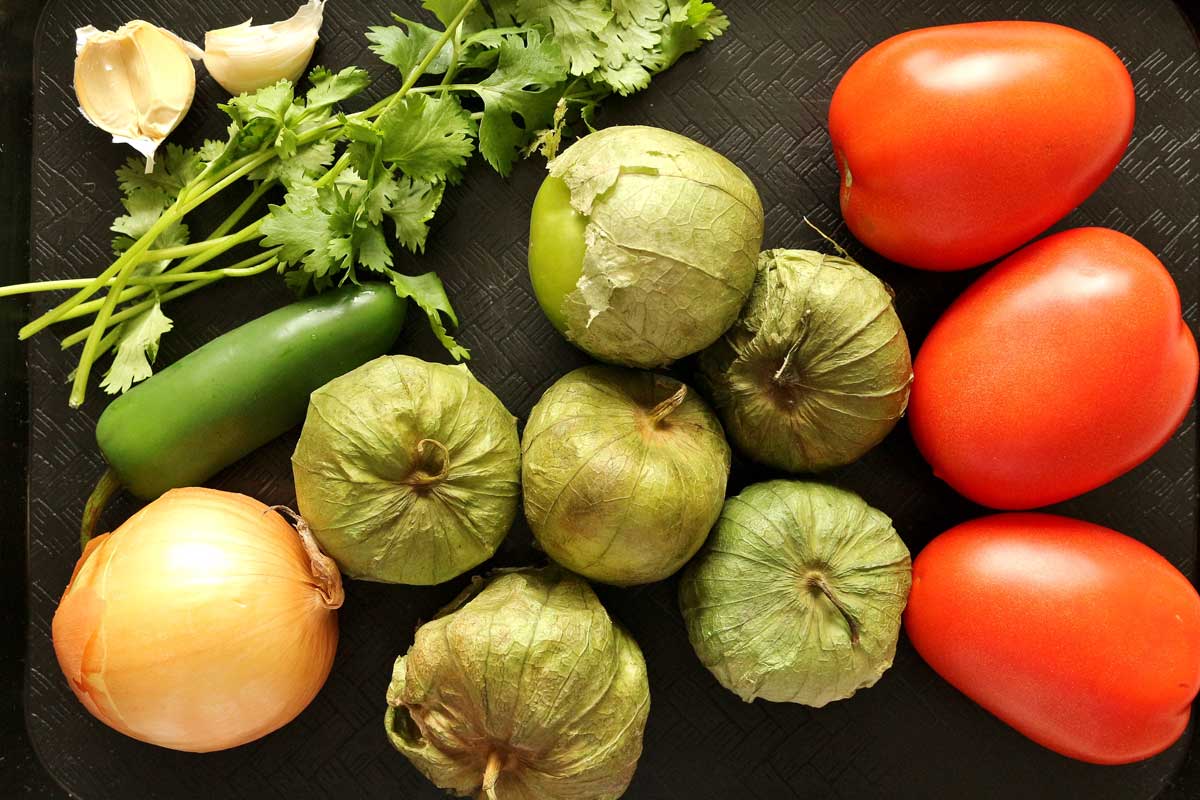
- Tomatillos: Tomatillos are also known as Mexican husk tomatoes. They are small, spherical green fruits wrapped in papery husks. Tomatillos are sometimes sticky beneath the husks. You must remove the husks and thoroughly wash the tomatillos before using them.
- Roma Tomatoes: These are the same as plum tomatoes. This variety of tomatoes is usually available year round in supermarkets and is quite firm and not exceptionally juicy. This makes it a great candidate to char for salsa quemada as it is less likely to fall apart in the process.
- Chiles: I use a slightly less spicy jalapeno in place of the serrano(s) and even remove the seeds because I don't want it too spicy for my family. The result is quite mild, especially since everything is roasted. Roasting mutes the spiciness of the chile. You can definitely include the seeds yourself, or even bump it up to two chiles if you want something with more zing.
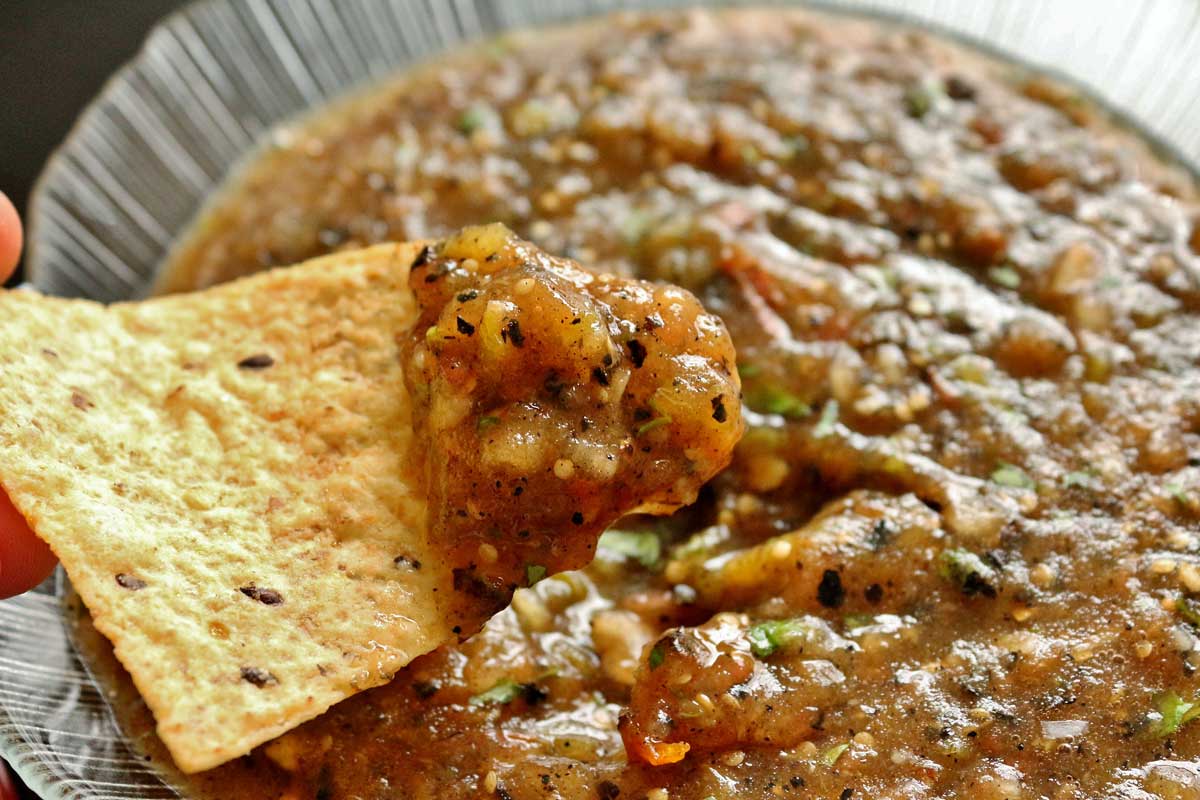
How to make it
Line a large cast-iron skillet with a piece of aluminum foil and set over high heat. Place the tomatillos, tomatoes, garlic, and chiles directly on the foil and roast until the garlic is softened, the chile has streaks of char and is softened, the tomatoes have a good char on all sides, and the tomatillos are soft and starting to bubble.
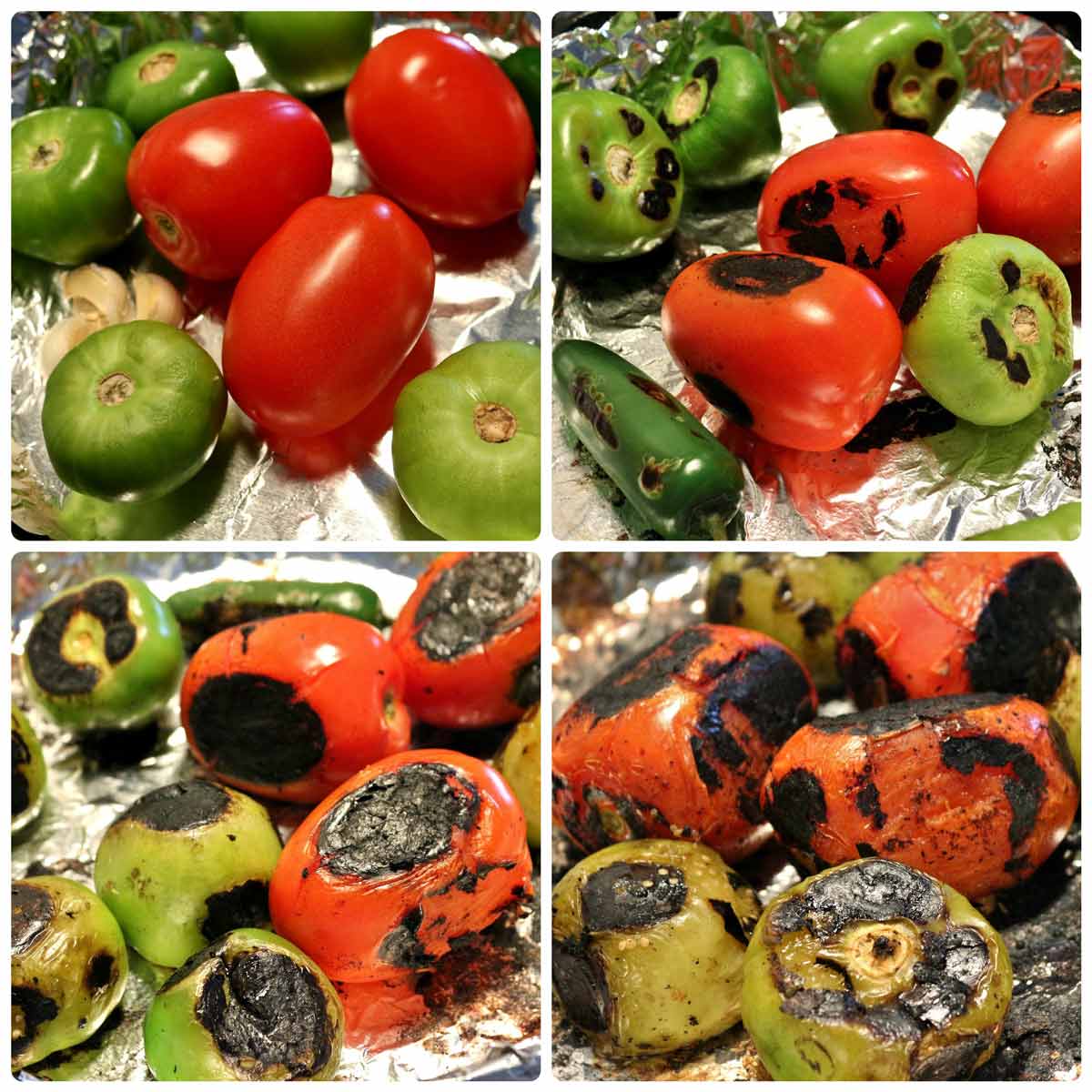
As each cooks remove from the pan and set aside to cool. The garlic is the fastest to cook and the tomatoes will take the longest.
When the tomatoes are well blackened and begin to slump, return the tomatillos to the pan if need be. Wrap the tomatoes and tomatillos in the foil, lift out of the pan, and set aside to cool.
Transfer to a food processor. Peel the garlic, stem the chile (and seed it if you'd like a milder salsa), and add to the food processor along with the onion and salt. Pulse the salsa quemada until well combined and mostly smooth–you want a bit of texture. Add the cilantro last, pulse briefly, and taste for salt again.
Please scroll to the bottom of the post for the full recipe (in a printable recipe card) including ingredient amounts and detailed instructions.
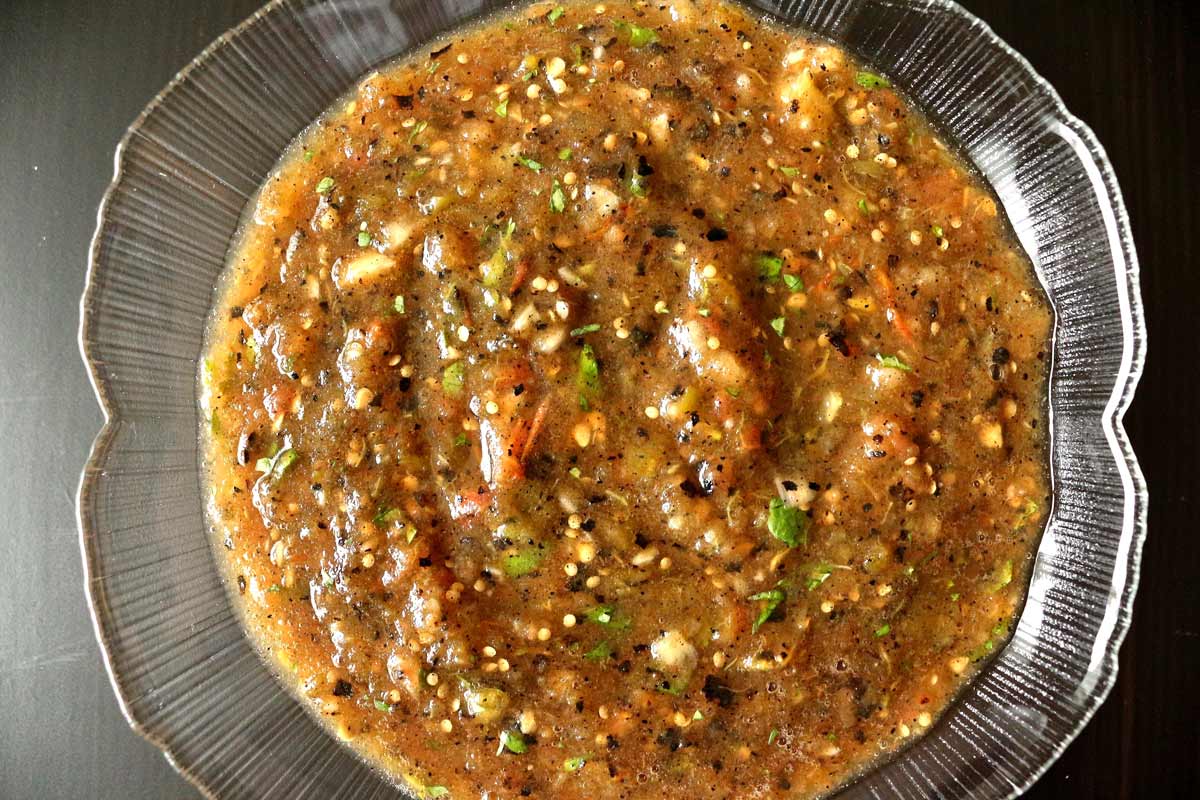
Expert tips
I recommend using silicone tongs when charring the ingredients so you don't accidentally rip the foil.
If you chose to you may make this salsa without tomatillos, using all tomatoes instead. Alternatively you can also make it will all tomatillos and no tomatoes. This is personal preference. The tomatatillos are more acidic and the tomatoes are sweeter. Adjust the amount of tomatillos and tomatoes accordingly.
Do not core or stem the vegetables before roasting. This will cause the juices to run out as they cook, and they will not properly char.
This smoky and tart salsa quemada is a classic table salsa. Enjoy it with tortilla chips, or serve it with eggs, tacos, quesadillas, grilled meats, and more.
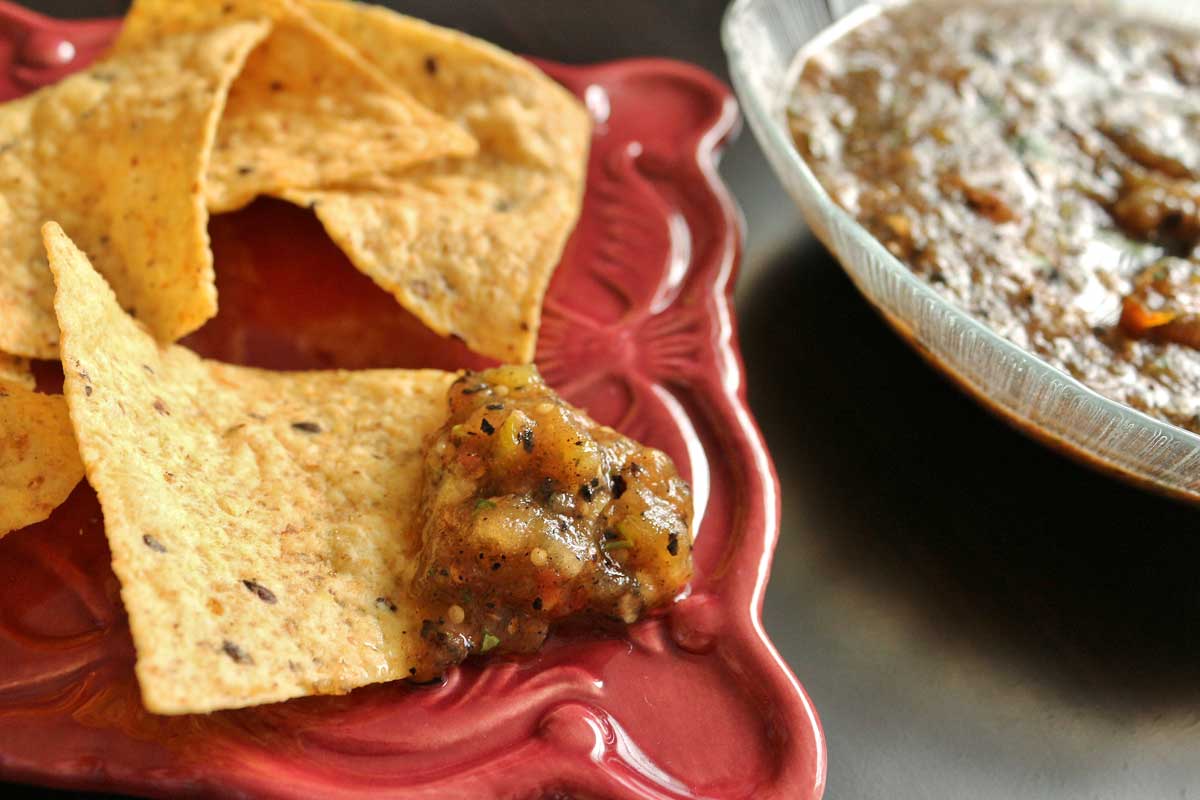
Other recipes you may like
- Build-Your-Own Nacho Bar with Homemade Nacho Cheese Sauce & World's Best Guacamole
- Chile con Queso
- Mole Poblano
- The Best Homemade Pickled Jalapeños
Tried this recipe? Please leave a star ⭐️⭐️⭐️⭐️⭐️ rating in the recipe card below and/or a review in the comments section further down the page. You can also follow me on social media on Facebook, Instagram, and Pinterest!
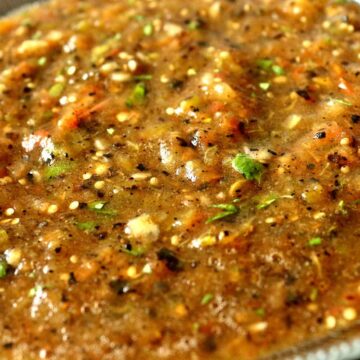
Salsa Quemada (Roasted Tomato and Tomatillo Salsa)
Ingredients
- 6 medium tomatillos husked, washed, and dried
- 3 medium roma tomatoes washed and dried
- 2 to 3 large cloves garlic unpeeled
- 1 or 2 large serrano or jalapeno chiles with stem(s)
- ¼ white onion diced
- 1 teaspoon kosher salt
- 1 tablespoon minced cilantro
Instructions
- Turn on the fan over the stove. Line a large cast-iron skillet with a piece of aluminum foil and set over high heat.
- Place the tomatillos, tomatoes, garlic, and chiles directly on the foil and roast without moving too often until the garlic is just softened, the chile has streaks of char and is softened, the tomatoes have a good char on all sides, and the tomatillos are soft and starting to bubble (it should take about 20 to 25 minutes total). As each is cooked, remove from the pan and set aside to cool. The garlic will be done first, and the tomatoes will take the longest.
- When the tomatoes are well blackened and begin to slump, return the tomatillos to the pan if need be, carefully wrap the tomatoes and tomatillos in the foil (it will be hot, use oven gloves if necessary), lift out of the pan, and set aside until cooled.
- Transfer to a food processor, along with any juices that run out as they cool. (Leave the black bits–they add flavor.) Peel the garlic, stem the chile (and see it if you'd like a milder salsa), and add to the food processor along with the onion and salt. Pulse until well combined and mostly smooth–you want a bit of texture. Add the cilantro last, pulse briefly, and taste for salt again.
Notes
- This salsa is fantastic on eggs, tacos, quesadillas, or grilled meats, or add to rice or soup.
- I recommend using silicone tongs when charring the ingredients so you don't accidentally rip the foil.
- If you chose to you may make this salsa without tomatillos, using all tomatoes instead. Alternatively you can also make it will all tomatillos and no tomatoes. This is personal preference. The tomatatillos are more acidic and the tomatoes are sweeter. Adjust the amount of tomatillos and tomatoes accordingly.
- Do not core or stem the vegetables before roasting. This will cause the juices to run out as they cook, and they will not properly char.
- Adapted from Salsas and Moles
Nutrition
*All nutritional information is based on third-party calculations and should be considered estimates. Actual nutritional content will vary with brands used, measuring methods, portion sizes and more.*

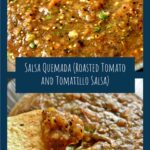
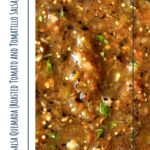

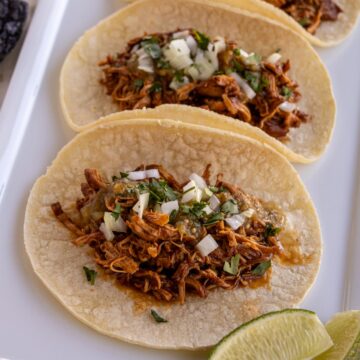
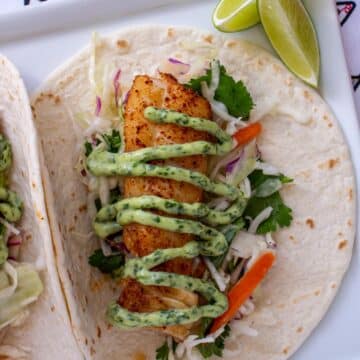
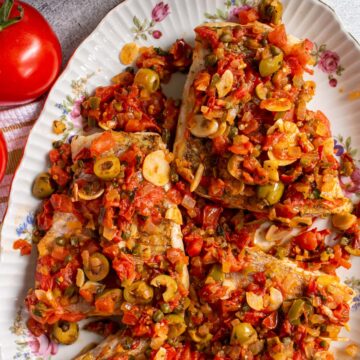
Ivonne says
I made this salsa today. It was delicious. I made a couple of changes: I charred the tomatillos, tomatoes, garlic and Serrano peppers in the oven (broil) and I used 3 large Serrano peppers instead of 2.
It has a kick, but I like my salsa very hot so it is perfect.